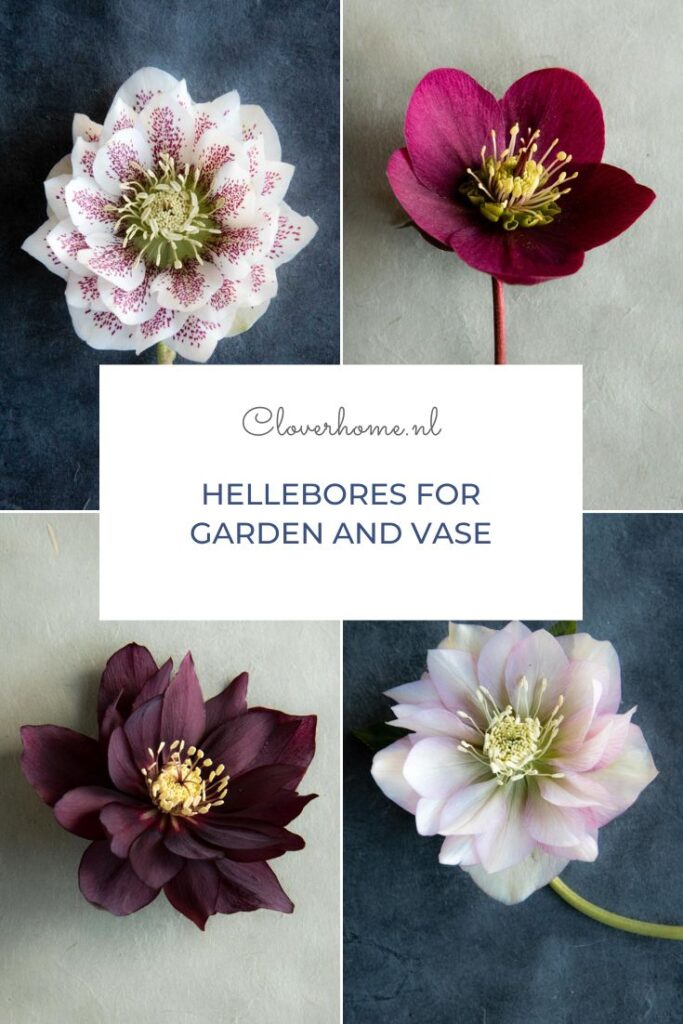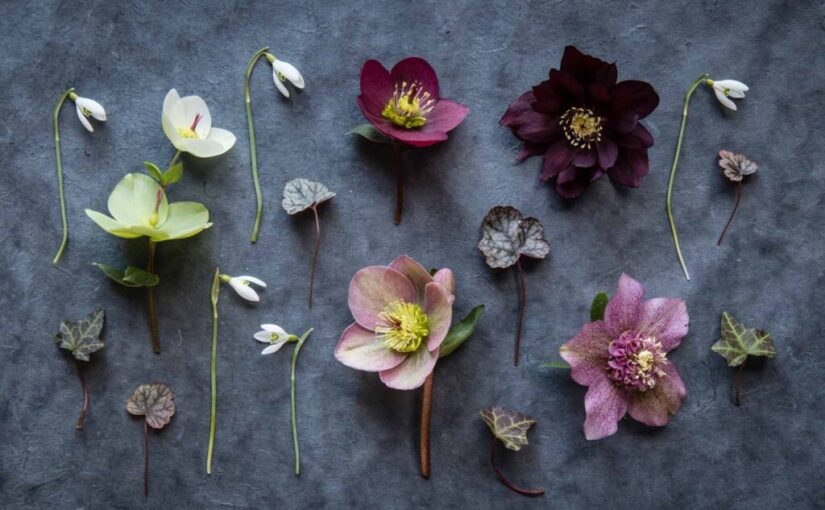Hellebores are the wonders of the winter garden. They are a combination of delicate and strong. They are elegant but can survive the most horrible weather; freezing rain, snow, hail and wind. Hellebores are easy to grow and are one of the few plants to bloom in winter. The flowers come in a gorgeous variety of muted colours including creamy white, pink, dark red and almost black. There are many varieties to choose from, some with frilly double and delicately freckled blooms. They are one of my favourite flowers, both for the garden and the vase!
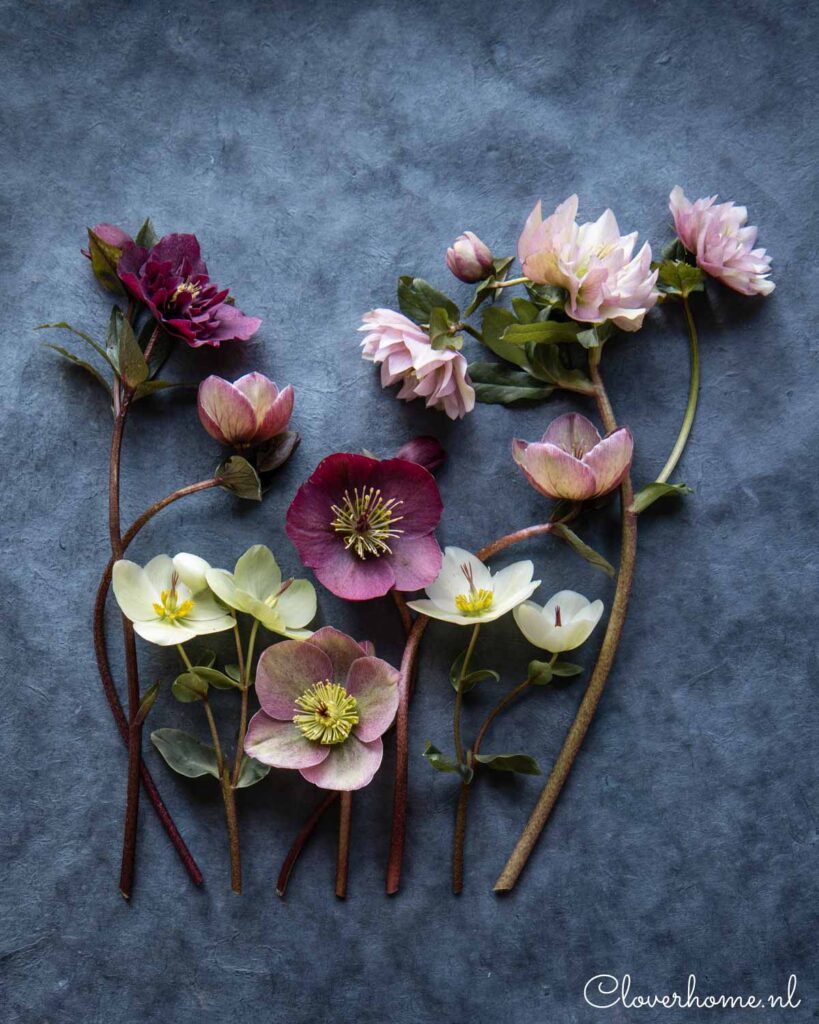
Wonders of the winter garden
Hellebores are the wonders of the winter garden. In this blog post, I gave you 4 reasons to grow hellebores. They are easy to grow, though they don’t like wet feet. It’s important not to plant your hellebores too deep, or the base of the stems may rot. Other than that, they are not very demanding. We have poor acidic soil but they do well in our garden. I do add chalk and cow manure pellets to the soil in autumn and compost in spring.
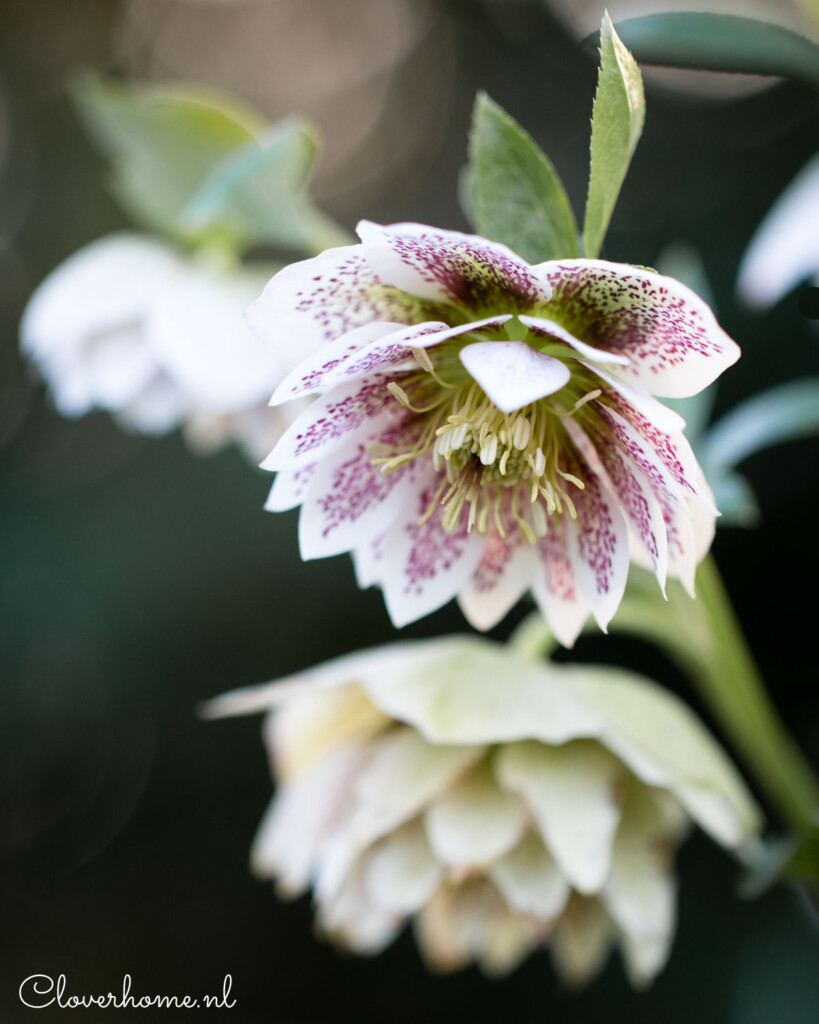
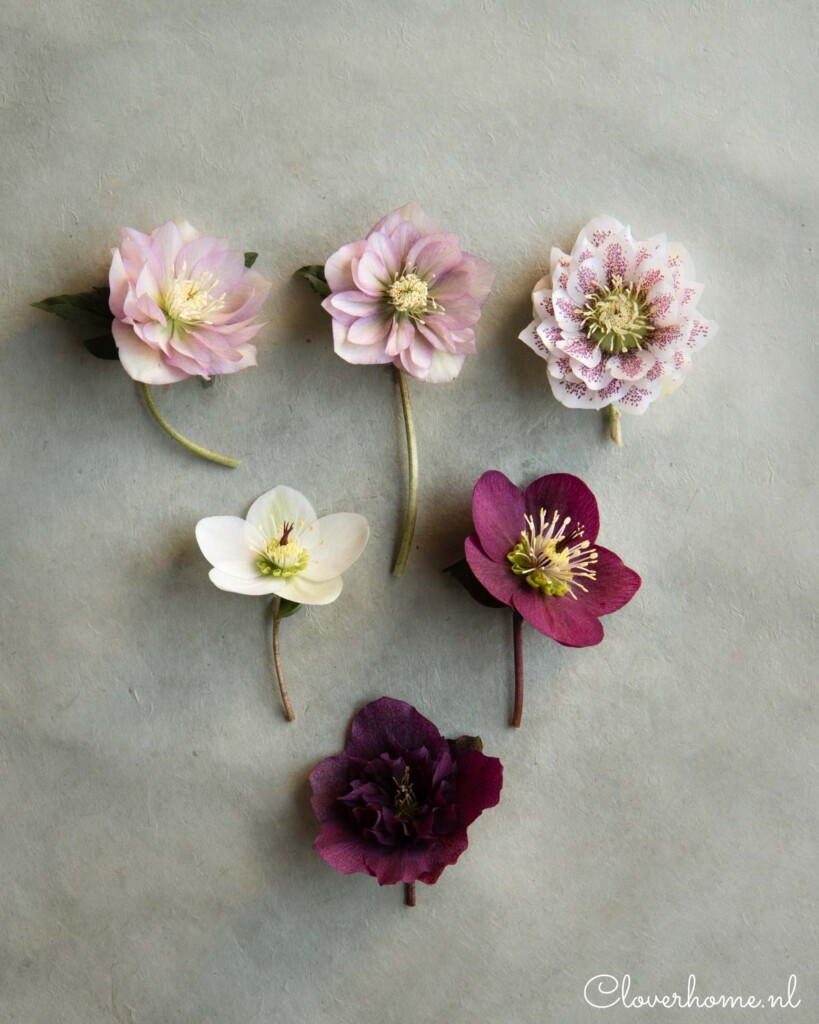
Hellebores thrive in the shade, so they are a great choice if your garden doesn’t have full sun. Most of my hellebores grow under the trees.
Many hellebores have downward-facing flowers. This protects the pollen from winter rains. Some of the newer varieties, like Anna’s Red, have large, outward-facing blooms. Obviously, you can admire those better from inside the house. But I don’t mind walking through the garden, turning up their faces to appreciate the beauty of each flower.
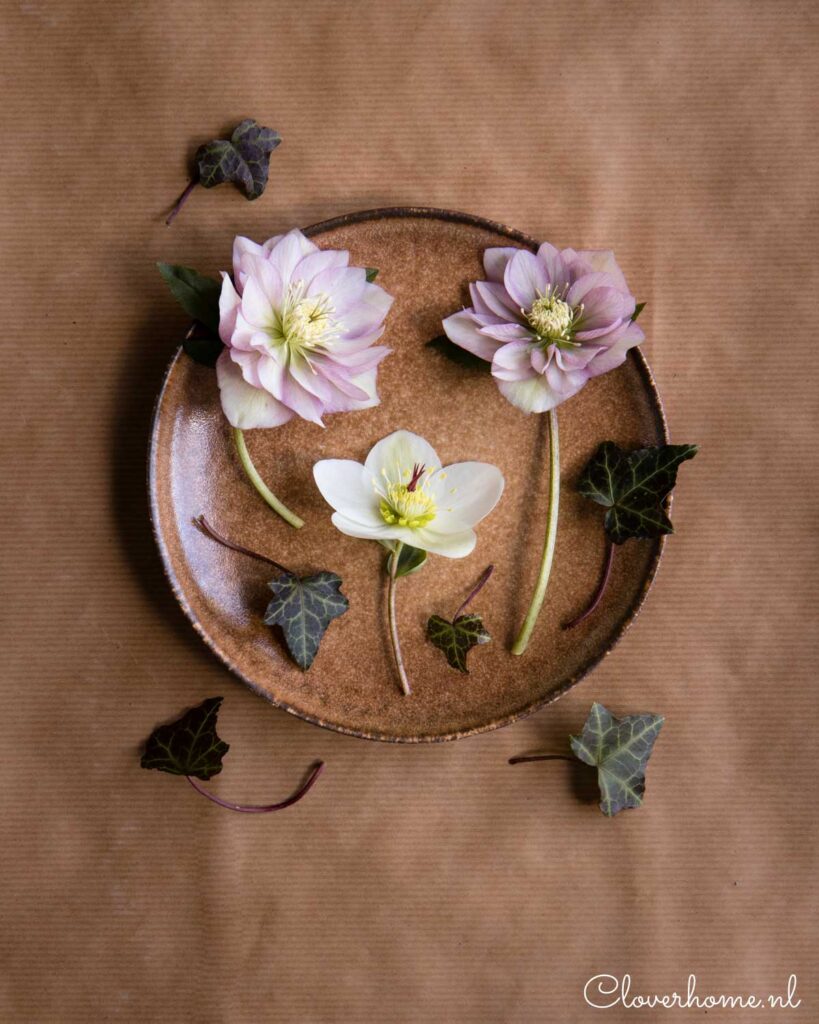
Favourite hellebore varieties
Hellebores come in many different muted colours, with speckles or veins or picotee edges. There are hellebores with single and double flowers. You have so many varieties to choose from! I love them all and would love to grow even more hellebores than I already am. A few of my favourites are the ones below, Cinderella, Anna’s Red, Cerise and Double Ellen.
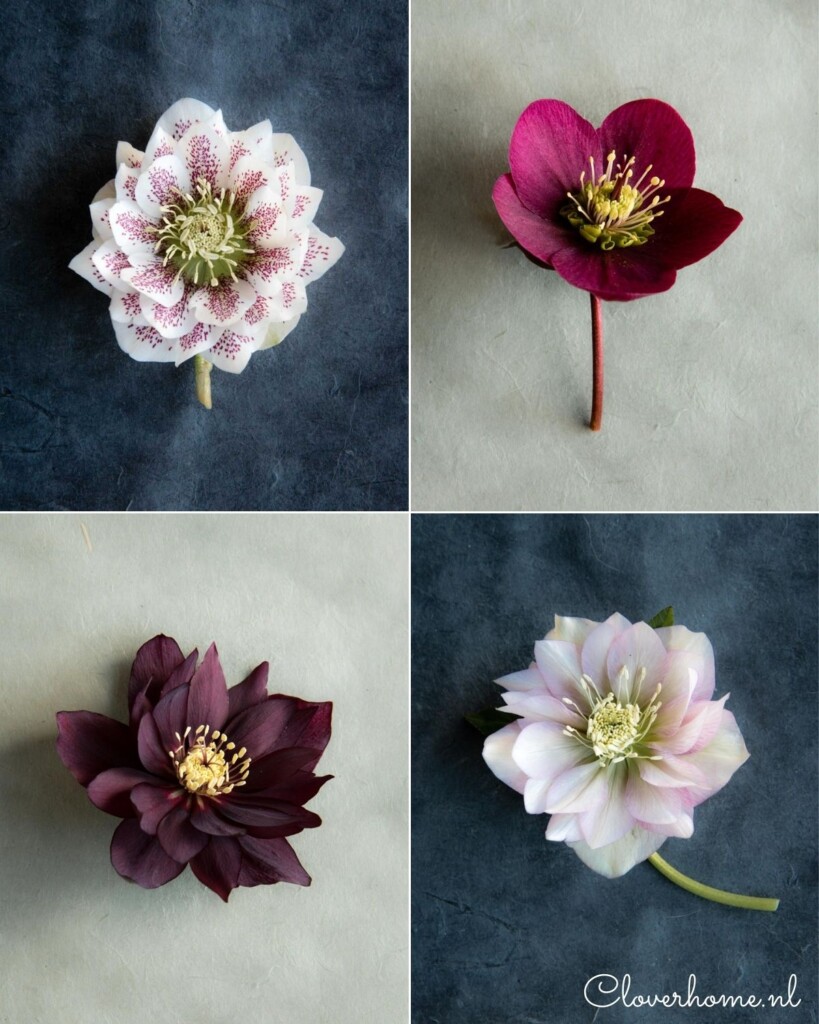
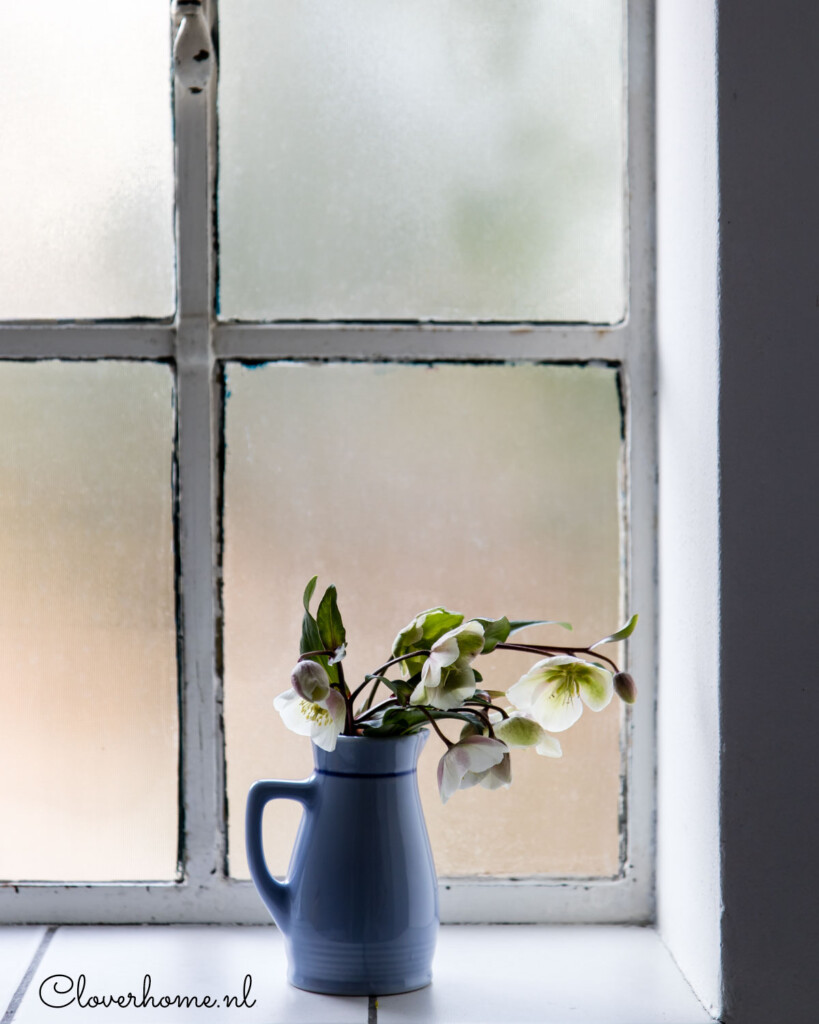
Hellebores for the vase
Because they are one of the first flowers to appear in the new year, it’s tempting to cut them and bring them inside. But hellebores aren’t the easiest cut flowers! Notorious for drooping and wilting, many hellebores last less than 24 hours indoors. So are there ways to help hellebores last longer in the vase?
There are many tips on how to make hellebores last longer in the vase. The first is to harvest after the flower stamens are gone and seeds have begun to form. The more developed the seedpods, the sturdier and longer-lasting the cut hellebore will be. Do you see the photos of Helleborus Anna’s Red below? The one on the right is ripe, and the one on the left is not. Helleborus Anna’s Red is a sterile hellebore, that’s why the seed pods aren’t that big.
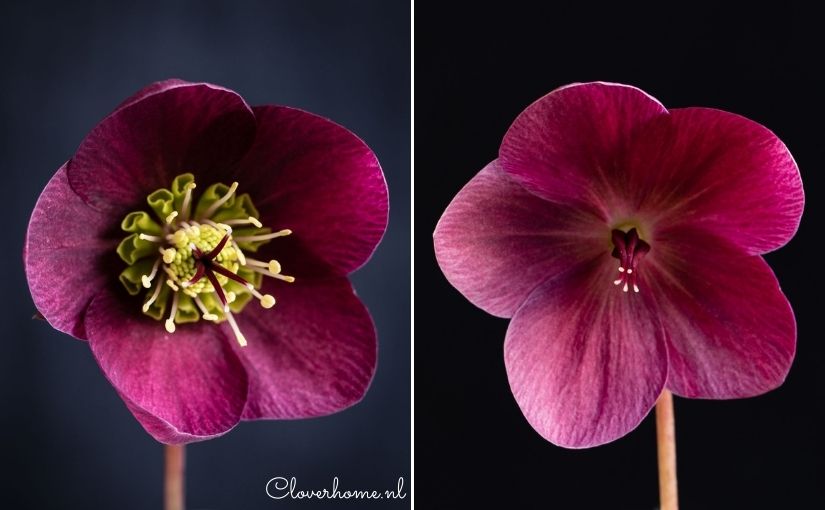
Others say that searing the stems before arranging can also help – just submerge the freshly cut stems in just boiled water for 20 to 30 seconds and immediately place them in cold water. Still others recommend a further step after dipping them in water. Slit them carefully right up their length, almost to the flower head at the top. Then, stand the slit stems in cold water right up to the flower and leave them overnight.
This all sounds rather complicated, doesn’t it? In my experience, it’s also a matter of luck. Sometimes they wilt, sometimes they will last for a long time in the vase. But it’s totally worth the try because an arrangement with hellebores is just amazing. The moody arrangement below includes hydrangea heads from last year, hellebores, fritillaria and Muscari. The pitcher is from a vintage Gluhwein set.
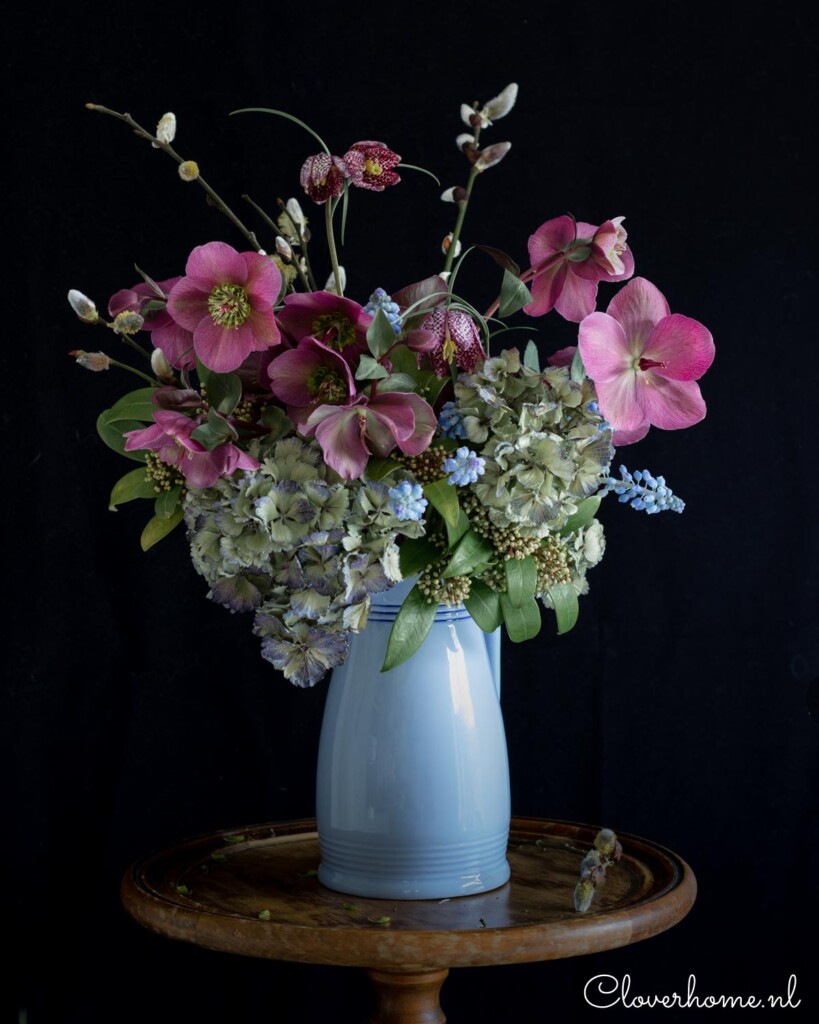
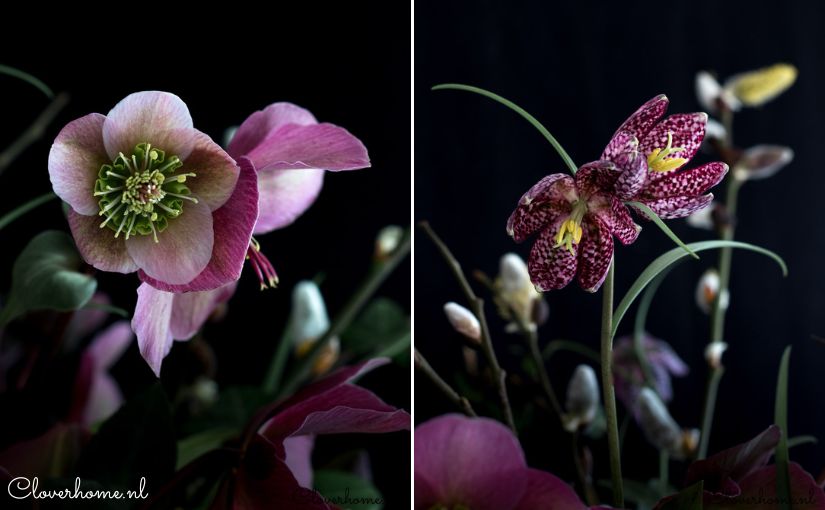
Floating hellebores
Maybe the best way to enjoy hellebores inside the house is to float the flowers in a bowl. This way you can admire their pretty faces. Simply snip off flower heads and float in a shallow bowl of water.
This is probably the easiest way to display hellebore flowers – not only do they last for a very long time but you also get to see the frills and the freckles.
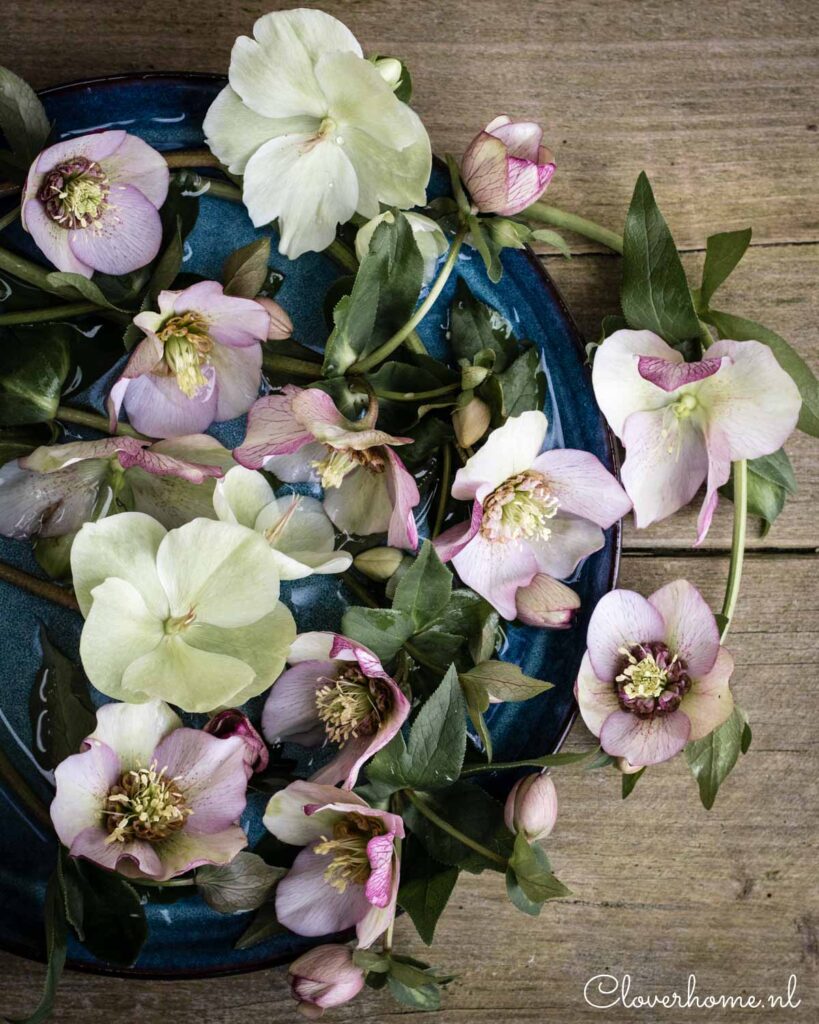
I hope you enjoyed this post about hellebores for the garden and the vase. Tell me, do you grow hellebores? I’d love to hear your experience with this flower in the comments below.
